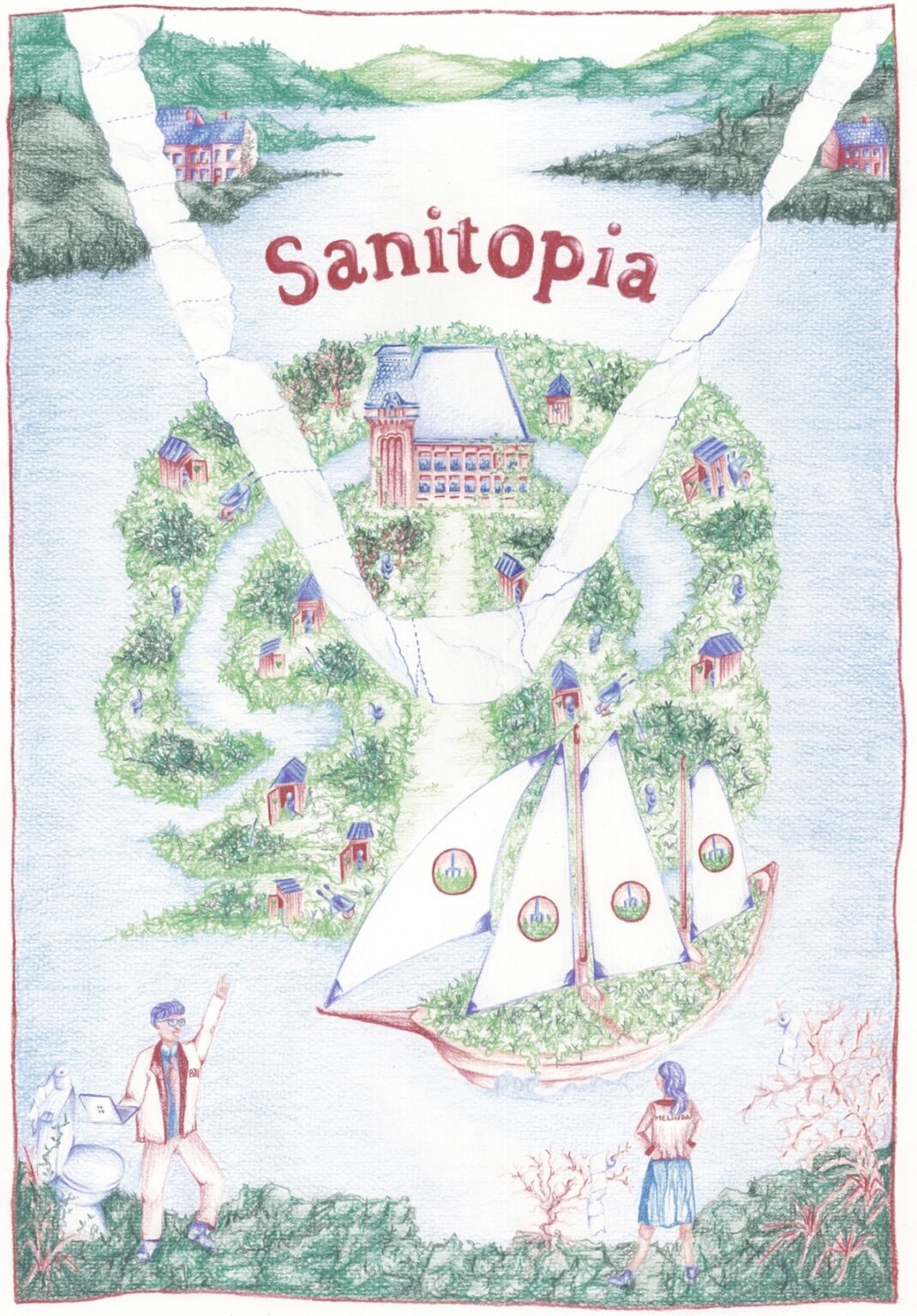| Tutor(s) | Nel Janssens and Manon Persoone |
| Campus |
Ghent |
| Language |
EN |
| Engagement | Constructing Mediating Tactics & Craftsmanship |
| Semester |
2 |
“Any utopia worth its name must consider sanitation.” – Utopia by Thomas More (1516)
The studio explores the dichotomy in western thinking between the ideal (utopia) and the earthly (human waste) through the site of the former Filature Nouvelle Orléans cotton mill. This site will be repurposed in the future and the studio is looking into possible scenarios of how housing the Faculty of Architecture and LUCA Visual Arts can happen here in a meaningful way. The focus is on augmenting the value of nature on the site (i.e. the value attributed to a particular area, seen from the perspective of nurturing nature, its conservation or protection). This is also a question within the scenario study that is currently being conducted by Sogent (see: https://stad.gent/nl/plannen-en-projecten/project-voormalige-fno-site-krijgt-nieuw-leven).
Expected output:
The aim of the course is not a comprehensive design of the entire site and buildings. Rather we seek to test how one design aspect might become a strong ecological, architectural or ethical proposition. We are looking for novel spatial visions and proposals to give new roles and values to architectural/ecological elements in environmentally regenerative ways.
The studio starts from an observation that the socio-ecological aspects of waste (treatment) are not yet sufficiently examined spatially and programmatically as an important design element in the practice and discipline of architecture. More specifically, it addresses the rapid and total removal of waste (here: sanitary wastewater) from our buildings, as this puts a heavy burden on our environment and infrastructures.
The design challenge lies in connecting what architecturally forms the smallest and largest scale on this site – for example, “sanitation” and “garden”. The direct, systemic relationship between the two forms the basis for the design of an infrastructural-architectural element on the site. Taking the site off-grid means that an important additional requirement/actor will be added to the program, important in size but especially in atmospheric and spatial quality. How this radical thinking can lead to challenging architectural ‘living environments’ is the question that is being asked here. This is mainly approached through speculative design, which means that the focus is on imagining such an architectural infrastructure rather than technically solving it. The outcome of this can vary in scale from an architectural element to a garden/landscape design. The expositional quality of the final result i.e. the media in which it is expressed (drawing, model, photo, film, text…) will be discussed during the studio.
Excursion/study trip/…
Visit of the FNO site with Sogent in the first weeks of the semester.
References/Further reading:
Annelies De Smet, Jo(han) Liekens, Nel Janssens and Manon Persoone, “Architecting Twenty-six Toilets to Re-figure Inhabitation: J for Jewel, S for Soil Times, T for Thigmophilia.” Full-text access to the paper (p.288-301): https://ca2re.eu/wp-content/uploads/2022/06/13_06_22_dupla_reduced.pdf.
Armstrong, R. (2019). Liquid Life: On non-linear materiality. New York: Punctum.
Holmgren, D. (2017). Permaculture: Principles and Pathways Beyond Sustainability, 2nd ed., Victoria, Australia: Melliodora Publishing.
Hughes, R. & Armstrong. R. (2021) The Art of Experiment: Post-pandemic Knowledge Practices for 21st Century Architecture and Design. London: Routledge.
Ingold, I. (2011). On Being Alive: Essays on Movement, Knowledge and Description. Abingdon: Routledge.
Journal for Artistic Research (online): https://www.jar-online.net/en
Jenkins, J. (2005). The Humanure Handbook: A Guide to Composting Human Manure. Vermont: Chelsea Green Publishing.
Kira, A. (1976). The Bathroom. New York: Viking Press.
Koolhaas, R. & the Harvard Graduate School of Design. (2018). Elements of Architecture (Chapter: Toilet). Cologne, Germany: Taschen GmbH.
Research Catalogue: https://www.researchcatalogue.net
Verlinden, T. & Vanoppen, M. (2021) Weg van Water. Gent: Academia Press.
Reference for the image:
Drawing © Manon Persoone (2022), ‘Sanitopia’

